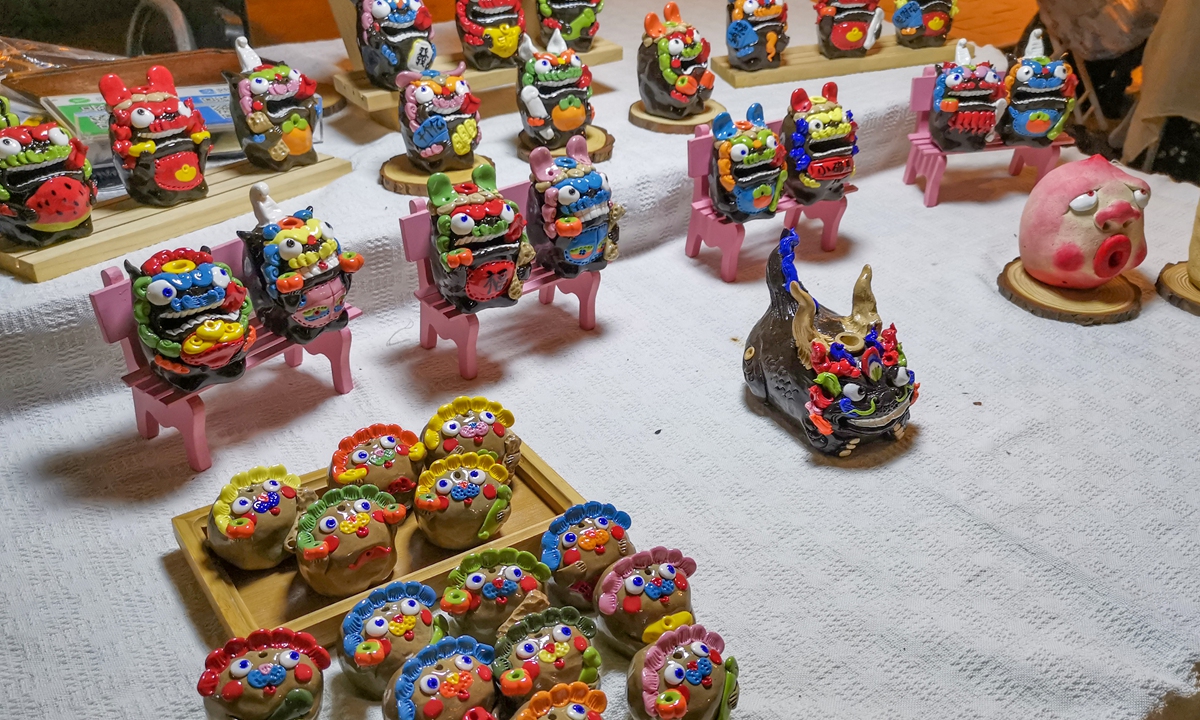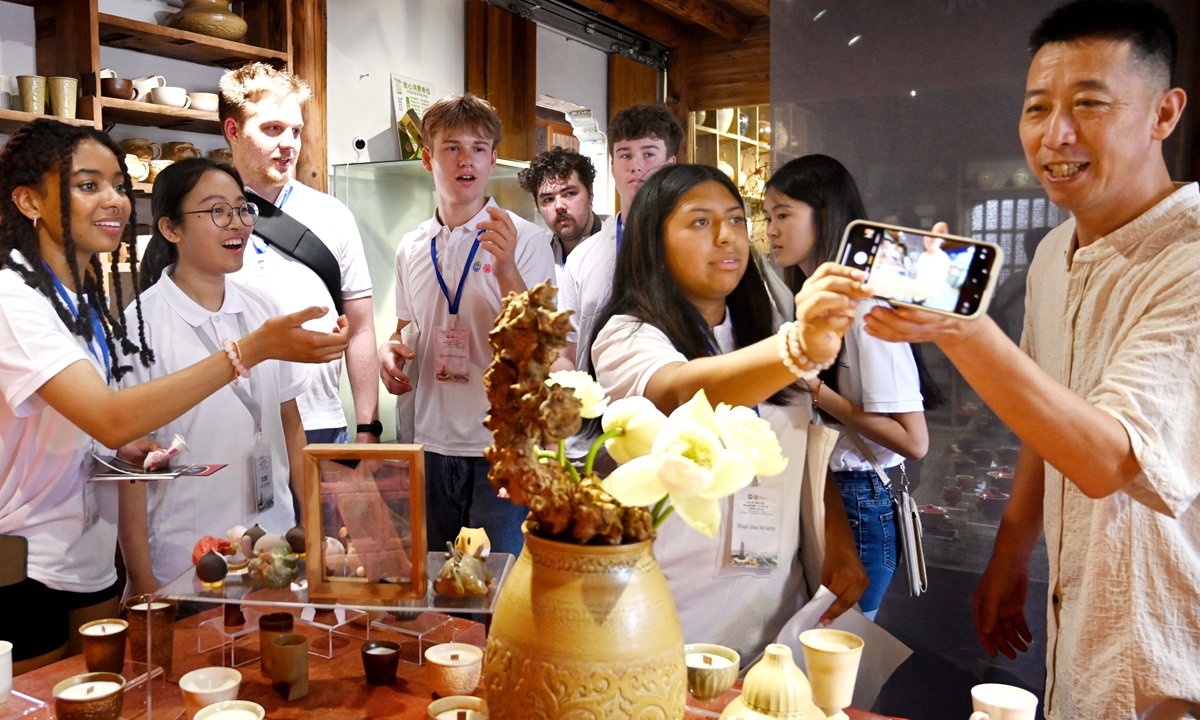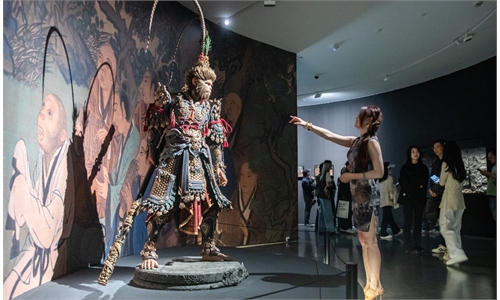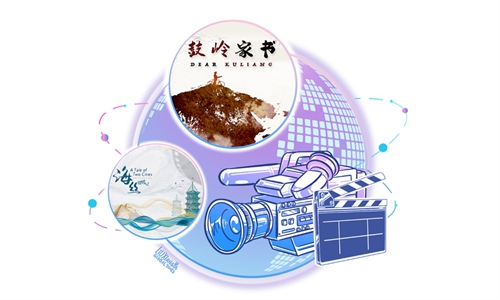ARTS / CULTURE & LEISURE
Surging appetite and youth-driven interest in neo-Chinese style
China-chic goes global

A porcelain night market in Jingdezhen, East China's Jiangxi Province, on September 13, 2024 Photo: VCG
In Dehua county, East China's Fujian Province, workers at a local ceramics company have been busy crafting new-year-themed porcelain pieces. Here, shelves are lined with ceramics of all shapes and sizes, decorated with motifs ranging from traditional Chinese designs to festive gingerbread men, pandas, and dragons.
"After a pause earlier this year, our orders resumed in May," Jin Jiangbo, a manager at one Dehua-based ceramics company, told the Global Times. "US and countries in Europe, which have long been our largest export destinations, are showing promising signs of recovery." What had initially seemed like a setback, a production halt due to market fluctuations, was instead a springboard for innovation.
That brief halt in production also became an opportunity to update their products. Beyond traditional Chinese patterns, the company added new holiday-themed characters and even released stand-alone collectible figurines packaged in blind boxes shaped like auspicious dogs.
According to customs data, Dehua's self-operated ceramics exports reached 1.44 billion yuan ($270 million) from January to May this year, showing an increase of 15.09 percent year on year. Meanwhile, online sales from local ceramics companies soared to 20.3 billion yuan in 2024, and nearly 70 percent of these sales were driven by livestreaming targeting younger customers, according to CCTV News.
Zhang Yi, CEO of the iiMedia Research Institute, told the Global Times that with the recovery of international flights and China's visa-free policies for many countries, guochao, or China-chic souvenirs are becoming increasingly popular with overseas tourists. "As the traditional Chinese style grows in popularity at home and abroad, designers are incorporating new elements that reflect the tastes of younger consumers."

An exhibition featuring pottery in East China's Zhejiang Province in 2025 Photo: VCG
Why pottery?
On the fourth floor of Beijing's Silk Street, a shop displays the official license to sell "Beijing Gifts." Its most prominent items are a pair of porcelain coffee cups adorned with traditional Chinese patterns - peonies, persimmons, and gilded touches - which have proven popular among foreign tourists.
"These are some of our best-selling items," Dong Qing, a representative of the Silk Street's marketing management team, told the Global Times. "They evoke Chinese tradition but feature sleek black-and-white colorways, making them particularly popular with overseas visitors who appreciate that balance of modernity and culture."
Dong added that while silk scarves and other textiles can often be produced quickly to suit tourists' custom orders, porcelain offers a different kind of allure. "Ceramics have a timeless beauty and functional purpose," she said. "That combination of aesthetics and utility means they appeal strongly to foreign visitors who want something they can both display and use."
Jin agrees that ceramics make for ideal souvenirs. "Some themes, like gingerbread men, sell well in US and Canada, but customers there also appreciate uniquely Chinese elements," she said. "In Europe, minimalist colors like black or gold work best. But in Southeast Asia, we focus on bold colors like red, purple, and yellow for flower pots."
This tailored strategy is bearing fruit. Zeng Liangxiang, executive president of the Fujian Ceramics Industry Association, revealed that emerging markets like India, Vietnam, and Russia already account for around 40 percent of exports, with sales growing by more than 10 percent over last year, according to CCTV.
Zhang noted that combining China-chic styles with local cultural elements appeals to tourists seeking both novelty and familiarity. "For example," Zhang said, "I saw a pink China-chic pottery teacup that caters to younger consumers but also features a traditional Chinese Buddha's figure and the Baoxianghua, a hybrid floral pattern design inside, marrying lacquer with white porcelain. That kind of design has broad appeal."
Design meets demand
In fact, ceramics are just one part of this larger story. Across China, China-chic has expanded into other forms of creative goods. Everything from white magnolia knot buttons and qipao-shaped soaps to refrigerator magnets shaped like steamed soup dumplings attract customers with their charming shapes and vivid colors.
Dr. Jonathan Sullivan, an associate professor at the University of Nottingham who specializes in Chinese cultural and international relations, once told US media that the popularity of these products reflects the rapid maturation of China's design sector. "It's not just about making good products," he said. "Designers have become adept at tweaking their products to fit local tastes and sensibilities."
In Ningbo, East China's Zhejiang Province, one company has pioneered eco-friendly curtains made from bamboo, hemp, and reeds. Durable, lightweight, biodegradable, and recyclable, these curtains have already been exported to 26 countries and regions.
Beyond their practical qualities, these products also feature elegant Chinese landscape paintings and "cloud" motifs, giving them a distinctive visual character that resonates in overseas markets, especially where consumers prioritize sustainability as well as cultural flair.
The manager of the company, Wang Jiayuan, said that customers in Europe appreciate the fact that their curtains fit with an environmentally conscious lifestyle, and by weaving Chinese design elements, such as mountain-and-water paintings and auspicious cloud patterns, into them, we make them more than home decor. They become a form of cultural expression.
This blending of tradition and innovation is also thriving in the hands of livestreamers and social media influencers. On overseas platforms, they highlight these Chinese cultural elements directly to consumers.
Cross-border livestreamer Cao Ruidan found that when selling Dehua ceramics online, unique designs help drive engagement. "My most popular item is a soda cup etched with a double-fish pattern," Cao told the Global Times.
"Young consumers overseas want something they can't easily buy at home. When I showcase these kinds of items during a livestream, they sell quickly. It's about creating an emotional connection, and also meeting their demands," Zhang noted. "That sense of connection is at the heart of China-chic's global rise."



